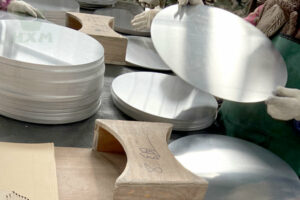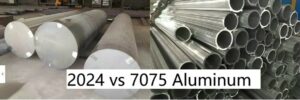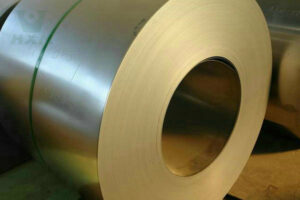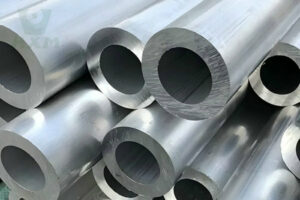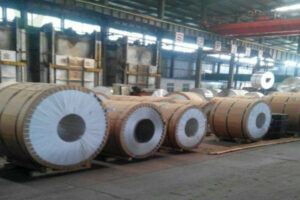In the production and application of aluminum products, the Aluminum Gauge (thickness standard) is an important indicator. It indicates the thickness of aluminum, which directly affects its strength, weight, and applicable scenarios. Gauge is usually used to describe materials such as aluminum plates and aluminum foils, and corresponds to the thickness unit of millimeters or inches.
Understanding the meaning of different gauges is crucial to choosing suitable aluminum products. This article will systematically introduce the gauge standards of aluminum and their common uses.
Aluminum Sheet
What is Aluminum Gauge?
Gauge is a non-linear unit of thickness used in the aluminum industry to indicate the thickness of a sheet or foil. In the common gauge system, the larger the number, the thinner the material. The thickness of different gauges may vary slightly depending on the material, so in aluminum, the actual thickness of a specific gauge will be different than a gauge for steel.
Aluminum Thickness Corresponding Table for Different Gauges
The following is a comparison table of common aluminum gauges and their corresponding thicknesses (mm and inches):
| Gauge (GA) | Thickness (mm) | Thickness (Inches) |
|---|---|---|
| 10 | 3.42 mm | 0.135 in |
| 12 | 2.57 mm | 0.101 in |
| 14 | 1.63 mm | 0.064 in |
| 16 | 1.29 mm | 0.051 in |
| 18 | 1.02 mm | 0.040 in |
| 20 | 0.81 mm | 0.032 in |
| 22 | 0.64 mm | 0.025 in |
| 24 | 0.51 mm | 0.020 in |
| 26 | 0.40 mm | 0.016 in |
| 28 | 0.32 mm | 0.013 in |
| 30 | 0.25 mm | 0.010 in |
Applications of Different Aluminum Gauges
Depending on the thickness of the material, aluminum of different gauges is suitable for a variety of industries and uses:
10-16 Gauge (thick aluminum plate):
Commonly used in aerospace, building structures, and shipbuilding, which require high strength and corrosion resistance.
Moderate thickness, suitable for manufacturing aluminum frames, exterior wall panels, and other structural parts.

18-22 Gauge (medium-thick aluminum plate):
Used for electrical housings, automotive interiors, and roof panels, reducing weight while ensuring strength.
Widely used in pipes, guardrails household appliance housings, etc.

24-30 Gauge (thin aluminum plate/aluminum foil):
Commonly used in food packaging, aluminum foil containers, air conditioning radiators, etc.
Thin and light, suitable for disposable items and light structures.
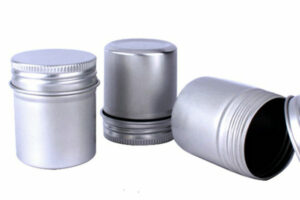
Why Choose the Right Aluminum Gauge?
Choosing the right gauge not only affects the strength and durability of the material but also directly determines the cost and weight of the project. Thin materials are usually cheaper and easier to process, but may not be suitable for high-strength loads; thick materials are more expensive but perform better in terms of structural stability and durability.
Based on Strength Requirements:
10-16 gauge aluminum plates are recommended for structures that need to withstand high loads.
Based on Usage:
Thinner 24-30 gauge aluminum foil is recommended for packaging and insulation materials.
Based on Weight Restrictions:
If the project needs to reduce weight, 18-22 gauge aluminum plates are recommended.
Differences between Aluminum Gauge and Other Metals
Below is a chart showing the thickness differences across common gauge numbers for various metals.
| Gauge (GA) | Aluminum Thickness (mm) | Stainless Steel Thickness (mm) | Carbon Steel Thickness (mm) | Copper Thickness (mm) |
|---|---|---|---|---|
| 10 | 3.42 | 3.57 | 3.42 | 2.58 |
| 12 | 2.57 | 2.78 | 2.66 | 2.03 |
| 14 | 1.63 | 1.98 | 1.98 | 1.63 |
| 16 | 1.29 | 1.59 | 1.52 | 1.29 |
| 18 | 1.02 | 1.27 | 1.22 | 1.02 |
| 20 | 0.81 | 0.95 | 0.91 | 0.81 |
| 22 | 0.64 | 0.79 | 0.76 | 0.64 |
| 24 | 0.51 | 0.64 | 0.61 | 0.51 |
| 26 | 0.40 | 0.48 | 0.45 | 0.40 |
| 28 | 0.32 | 0.38 | 0.38 | 0.32 |
| 30 | 0.25 | 0.32 | 0.30 | 0.25 |
Different metals have different gauge systems, so it is critical to understand the actual thickness of each material for a given gauge number. Selecting the correct gauge and metal ensures optimal performance in terms of weight, strength, and cost. Understanding these differences helps industries select the right material for their specific application, whether it is for structural stability, corrosion resistance, or electrical conductivity needs.
